Guitar Buying Guide: What To Know Before You Buy an Acoustic or Electric Guitar

Understanding how to select the right guitar type that’s best for your learning style and playing needs can help make the guitar buying process much easier. So, before we can officially salute those who are about to rock, we (along with our friends at Beginner Guitar HQ) have a few tips and recommendations to help you get started:
- Know the term “tonewood.”
- Know which guitar style is best for beginners.
- Know the types of electric guitars.
- Know budget-friendly accessories for your guitar.
1. Yes, “Tonewood” Is A Thing!
Wood is favored for guitar crafting. A guitar needs to hold itself together as well as produce a great tone (aka, “tonewood”). Tonewood has the capacity to effectively produce brighter, sharper sounds as well as warmer, deeper overtones.
However, not all types of wood are suitable for crafting guitar parts, which is why choosing the right type of tonewood is important! Below are three common wood types used in crafting:
Maple
- Primarily used for the neck and fretboard
- Produces an extremely clear sound
- Maple resonates well and produces defined tones
Mahogany
- Strong, but malleable
- Produces a full, yet twangy sound
- Many favor the red hue of the wood
Ash
- Sustains chords and notes
- Strongest and most economical wood type
Each wood is used for its particular characteristics, so research the different woods suitable for the specific style of guitar you are interested in playing.
2. Beginner? Learn On The Acoustic First.
For a beginner guitarist, we recommend test-driving an acoustic. Acoustic guitars are one of the most beginner-friendly musical instruments and can be learned quickly. Starting on the acoustic is more meant for learning chords and finger placement, as well as understanding how to amplify your sounds or quiet your sounds. Plus, many are low in cost, so they won’t break your budget!
Advantages Of An Acoustic
- Portable
- Doesn’t need electricity to play
- Doesn’t need a lot of equipment other than a guitar pick
- Usually, strings won’t hurt the fingers as much compared to the electric guitar strings
Never underestimate the wisdom of veteran guitarists when it comes to brand and style advice! Although many musicians will have their preferences, we recommend Washburn’s Apprentice Series as being a great starter for beginner musicians:
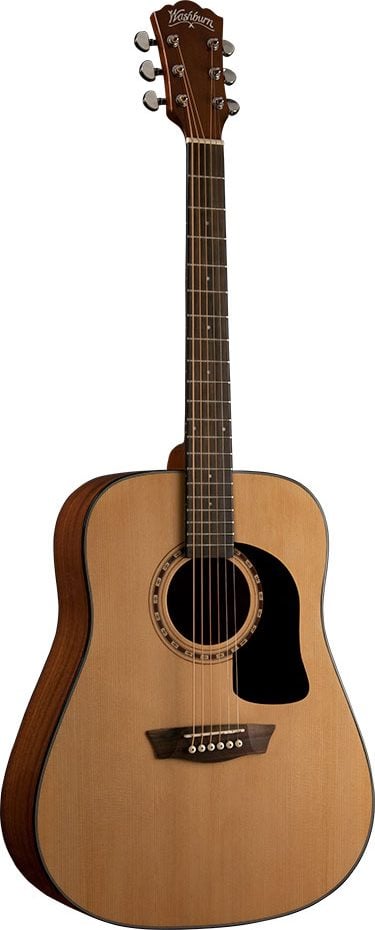
Credit: Washburn
- Best to use when learning finger placement and sound desired
- Most affordable
- Premium spruce top
- Mahogany back and sides for a full rich tone
Washburn guitars have plenty of series and styles to choose from. Do some research to find the best acoustic for your learning style!
3. Know Your Electric Guitars.
When choosing an electric guitar, decisions will rely more on the components and the quality of the craftsmanship rather than the type of wood used.
An electric guitar relies on the wood simply as a strong base capable of sustaining the tension of the strings, as opposed to an acoustic guitar using the wood to amplify the sound. The three most-common body styles are featured below:
Solid body
- Most common for rock, pop, and country genres
- Lacks a hollow resonating chamber, which means the sound can be amplified louder
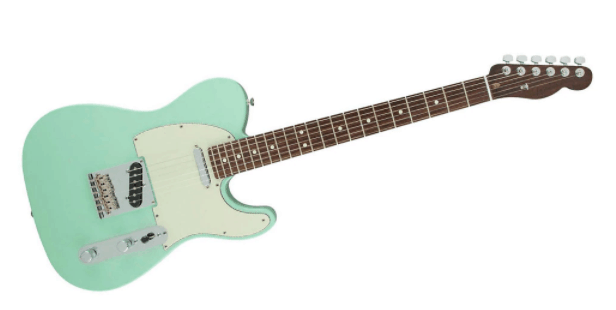
Credit: Guitar Center
Hollow body
- Most common for jazz or blues genres, plus rock n’ roll
- Tone is silky smooth and electrified
- Has a large resonating chamber
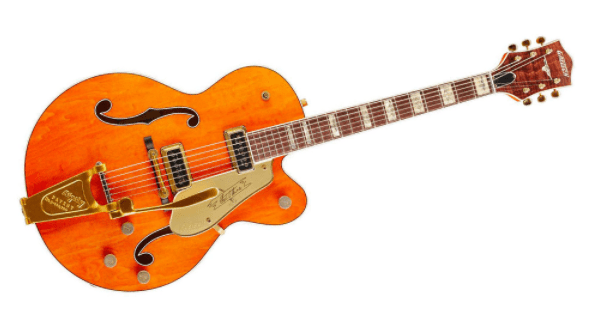
Credit: Guitar Center
Semi-Hollow body
- Versatile and can adapt to any genre
- Has a hollow resonating chamber paired with a solid center block
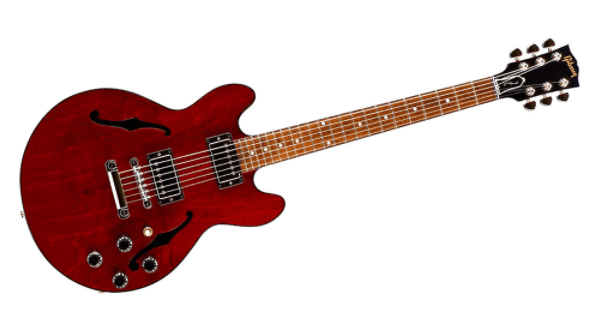
Credit: Guitar Center
Don’t forget!
A few components often overlooked are the switches, tone knobs and volume knobs just below the strings. Are they easy to reach and control with the hand not picking or strumming?
4. Budget For The Accessories, Too!
Enthusiastic shoppers may forget about the extras needed once the actual guitar is purchased. Our friends at Beginner Guitar HQ list several great products, including amp suggestions and guitar cases, but we’ve chosen a few common accessories below that are budget-friendly for beginners.
Picks
They are the tiniest accessory that can often cause the biggest headache for musicians. That’s because you need to find the right material and thickness that can help you strum or pluck without having to use your fingers all the time. If a pick is too flimsy, they can break easily or won’t provide the right sound you are looking for.
ChromaCast CC-Sample-12PK
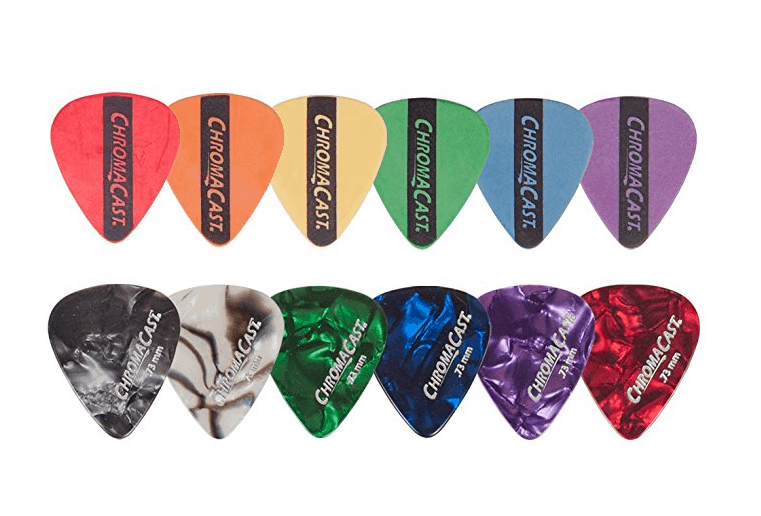
Purchase on Amazon
Stands
Stands can be made out of different materials, but they should all be durable. The materials can dictate how much they will stand with your instrument and how much they will be able to shield it from danger and the like.
Top Stage Pro
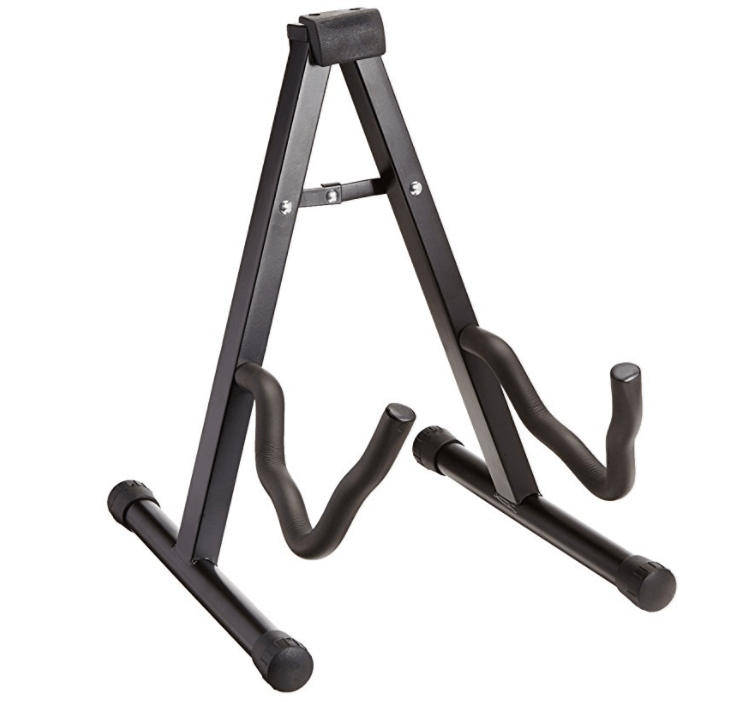
Purchase on Amazon
Storing your instrument in the right temperature is important. If you are not using your instrument, make sure you store it in the right place to avoid such hassle and damage to your instrument in the long run.
Straps
When you choose the best guitar strap, the length can vary depending on the desired length or type of guitar that you have, as well as how tall or short you are.
Protec Leather Ends

Purchase on Amazon
You don’t want your guitar to be too far from your body, making it uncomfortable to play. The thickness can also have an impact, as a thickness that is wider can mean more support for your shoulders.
Tuner
It is always unpleasant to hear an off tune guitar, so you should make it a habit to tune your instrument before every performance or even practice. Tuning your guitar as quickly as possible is important because it will help save up on setup time; too long a setup time will get the audience bored eventually!
D’Addario NS
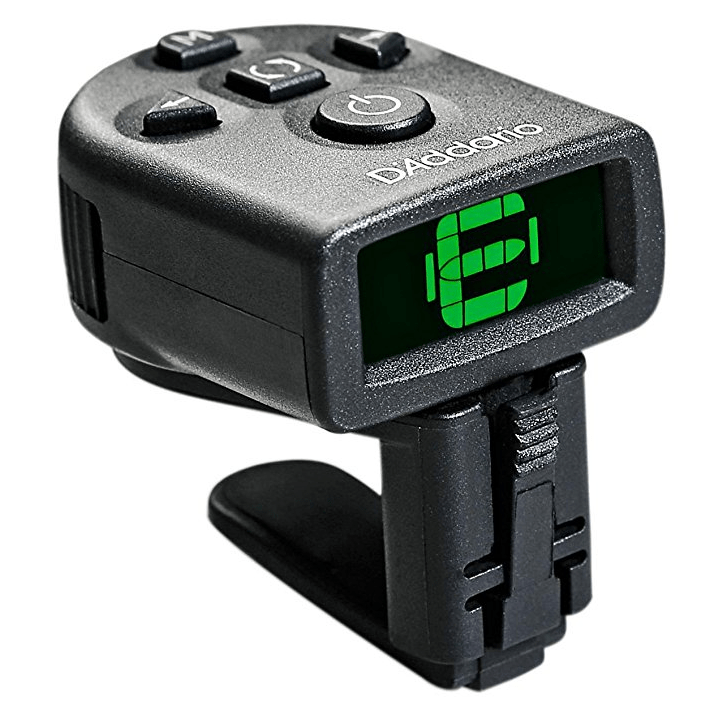
Purchase on Amazon
The standard tuning of a guitar is E A D G B E.
Strings
Different guitars have different purposes. Consider your choice in strings to meet the criteria that you expect so as not to waste money in the long run. Electric strings run on amplifier power and can produce loud sounds while acoustic strings are more for the quiet practice purposes, small venues and subtle music.
The gauge or thickness can play a role in a string set. Thickness is how much volume or bass you want or how much treble you want for your strings.
D’Addario EXL 110-3D *for electric guitars
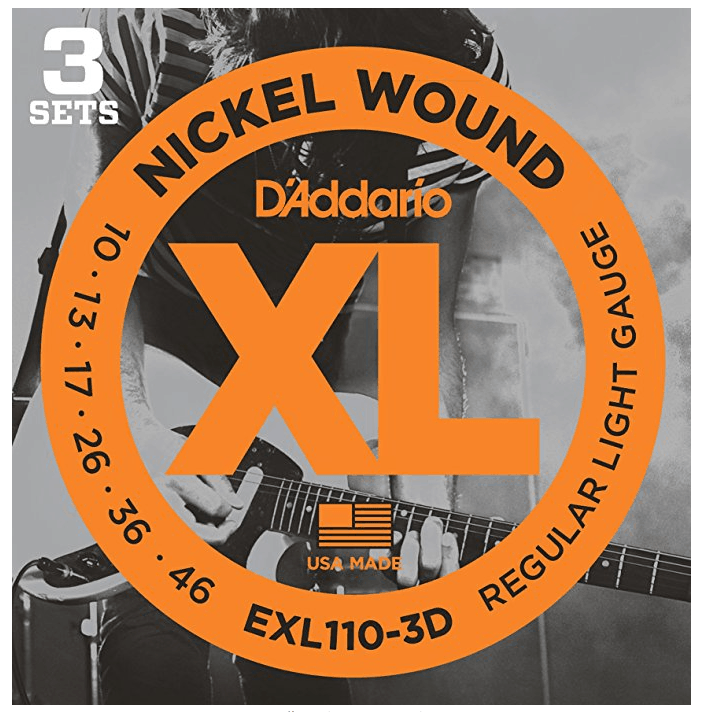
For Electric Guitars. Purchase on Amazon
Acoustic guitars normally use nylon or steel strings. Electric guitars use stainless steel or nickel.
Shout-out to our friends at Beginner Guitar HQ for the inspiration! Remember, our tips and recommendations are only a few of the things you should keep in mind when buying a guitar. Don’t hesitate to ask friends, family, or even the associate at the guitar shop for extra help!
Once you’ve ensured the guitar is well crafted, within your budget, and meets the requirements of the style of music you hope to play, take a look at our helpful “Guitar Tab Explained: How to Read Guitar Tab Notation and Chord Diagrams” guitar guide and start playing. Happy shredding!
More Blog Posts Related to Guitars
- How to Choose, Tune, & Play Your First Guitar: Beginner Tips
- What’s the Best Option for Beginner Guitarists – An Acoustic or Electric Guitar?
- How to Choose Your First Acoustic Guitar (Do’s and Don’ts)
- Best Guitar Tips For 2023
- Guitar Maintenance: How To
- Rockabilly Chord Progression
- Iconic Guitar Parts In Movie Soundtracks
- Alternate Picking Techniques

